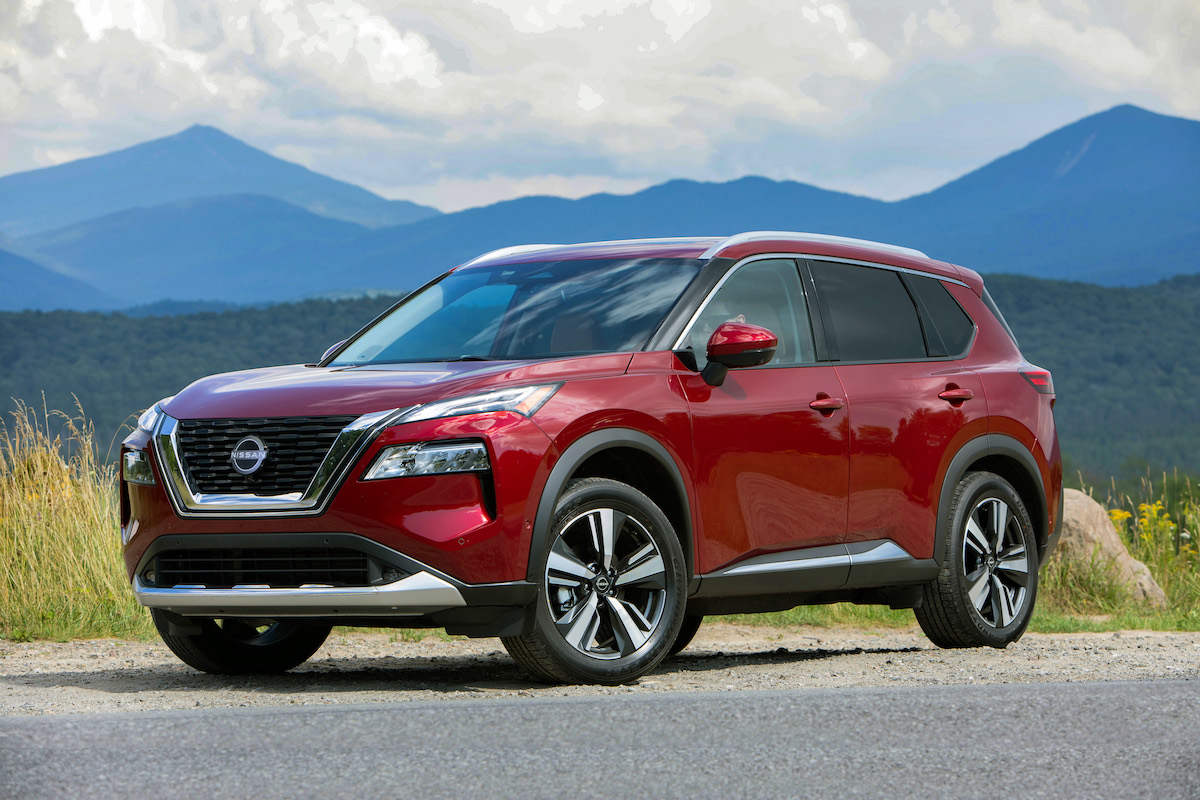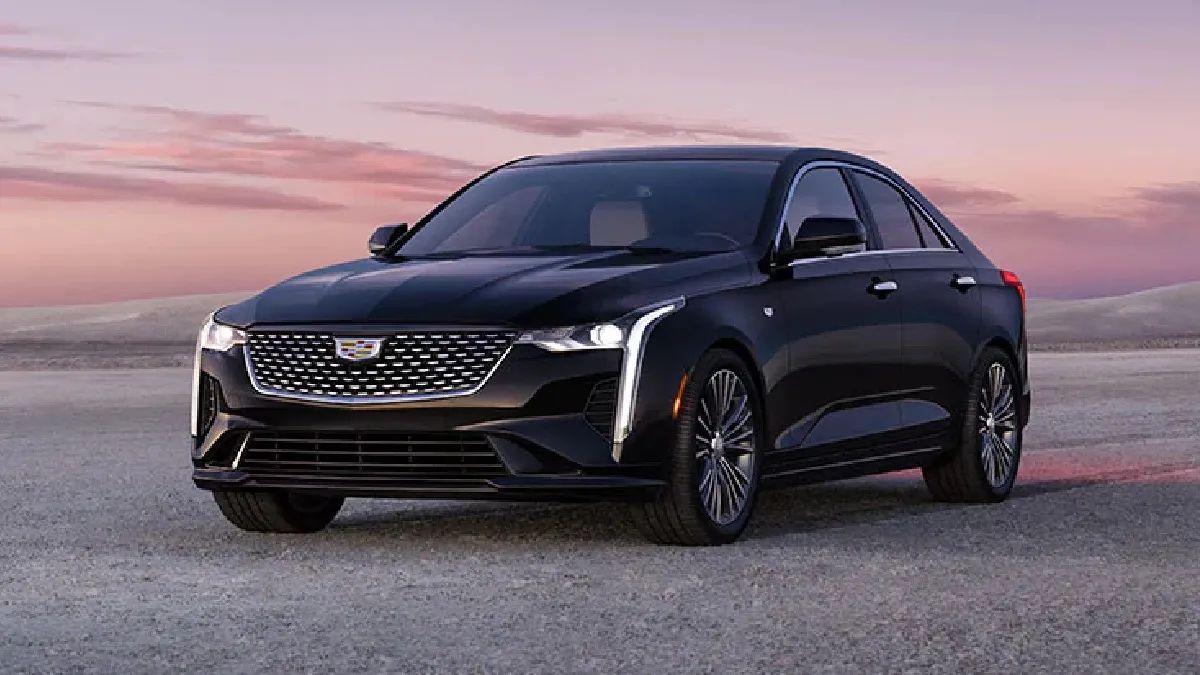
There’s an undeniable thrill that comes with the dream of a new luxury car. It’s a vision of sweeping lines, opulent interiors, powerful engines, and the kind of presence that turns heads. For many, it’s the ultimate reward, a testament to success, and a ticket to an elevated driving experience that transcends mere transportation. You imagine smooth journeys, the scent of premium leather, and the effortless surge of power underfoot. It’s more than just a car; it’s a statement, a lifestyle, a mechanical masterpiece of desire.
But here’s the unvarnished truth, the kind of reality check that hits harder than a speed bump at 80 mph: that gleaming badge, that handcrafted cabin, and that monstrous engine often come with a hidden cost, a financial gravity well known as depreciation. It’s the silent thief that strips away thousands, sometimes tens of thousands, of dollars from your prized possession faster than you can say “full coverage insurance.” Before you even get to fully enjoy those luxurious features, before the new car smell completely fades, your investment can start to erode, leaving a bitter taste in the mouth of even the most enthusiastic owner.
This isn’t just about making a smart financial decision; it’s about the emotional toll of watching a significant investment vanish into thin air. We’re about to take a hard, critical look at 15 luxury vehicles that, for all their initial allure and engineering prowess, become financial anchors for their owners after just five years. These are the machines where the sorrow of every depreciation drop becomes a tangible, painful reality, making owners wish they could hit the ‘unbuy’ button to save themselves from the brutal economic truth. Prepare for some unflinching analysis, because sometimes, the most beautiful cars hide the ugliest financial surprises.
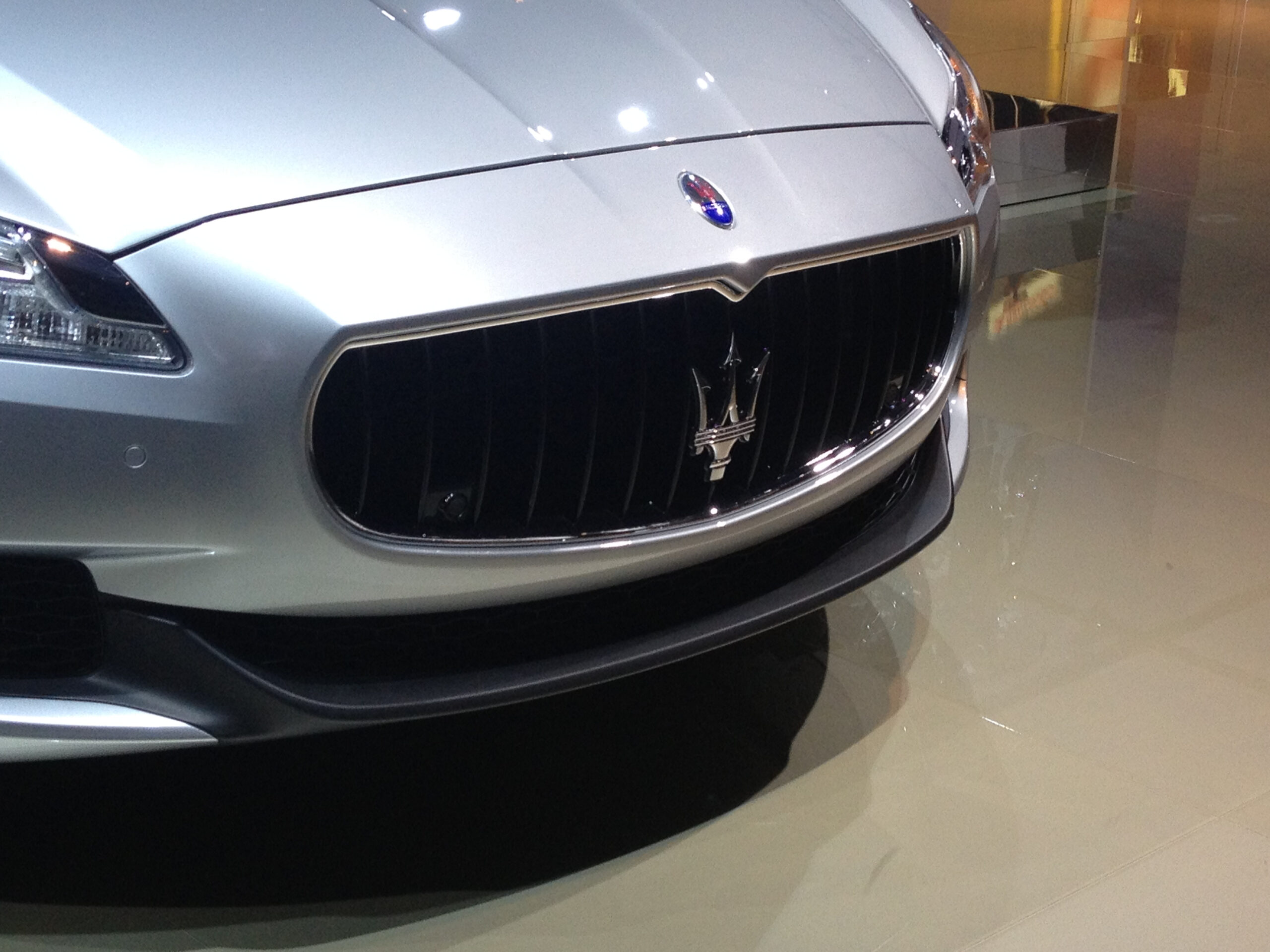
1. **Maserati Quattroporte**
Ah, the Maserati Quattroporte. Just uttering its name conjures images of Italian elegance, sophisticated power, and a cabin draped in luxury. Under the hood, we’re talking about a Ferrari-made V8 engine providing a staggering 580 horses—a symphony of power that promises an exhilarating drive. This is a vehicle designed to make a statement, to offer immense comfort, and to transport its occupants in a style that few other sedans can match.
However, beneath that stunning facade lies a stark financial reality. With an original price tag of $126,805, the Quattroporte might seem like a solid, albeit extravagant, investment. But after just five years, its depreciation rate skyrockets to 64.5%, leaving a resale value of around $44,950. That’s a difference, a staggering loss, of $81,851. That’s not just a drop; it’s a financial freefall that hits hard and fast.
The context for this dramatic value plunge isn’t hard to find. A Ferrari-made V8, while a marvel of engineering, translates to specialized and incredibly expensive maintenance. The sheer cost of upkeep, coupled with an often-finicky reputation for reliability as they age, makes these vehicles a massive liability on the used market. Suddenly, that “Italian elegance” starts to look a lot like Italian exasperation when the service bills arrive.
For all its grandeur and the prestige of the Trident badge, the Quattroporte quickly transforms from a dream machine into a veritable financial black hole for its original owner. Drivers who bought this new, expecting to revel in its sophisticated power and luxury, are often left grappling with a stinging realization: the price of admission was just the beginning, and the true cost of ownership can make you wish you’d never signed the dotted line.
Car Model Information: 2012 Maserati Quattroporte S
Name: Maserati Quattroporte
Caption: Maserati Quattroporte VI
Manufacturer: Maserati
Production: 1963–1969,1971,1974–1990,1994–2001,2003–2012,2013–2023
Assembly: Modena,Grugliasco,Turin
Class: Full-size luxury car
BodyStyle: Sedan (car)
Sp: uk
Categories: 1970s cars, 1980s cars, 1990s cars, 2000s cars, 2010s cars
Summary: The Maserati Quattroporte (Italian pronunciation: [ˌkwattroˈpɔrte]) is a four-door full-size luxury sedan produced by Italian automobile manufacturer Maserati. The name translated from Italian means “four doors”. The production of the sixth generation ended in late 2023, with the first generation introduced in 1963.
Get more information about: Maserati Quattroporte
Buying a high-performing used car >>>
Brand: Maserati Model: Quattroporte
Price: $12,980 Mileage: 82,851 mi.
Read more about: Luxury Dream or Maintenance Nightmare? These High-End Cars Will Bleed Your Wallet Dry After Their First Major Service
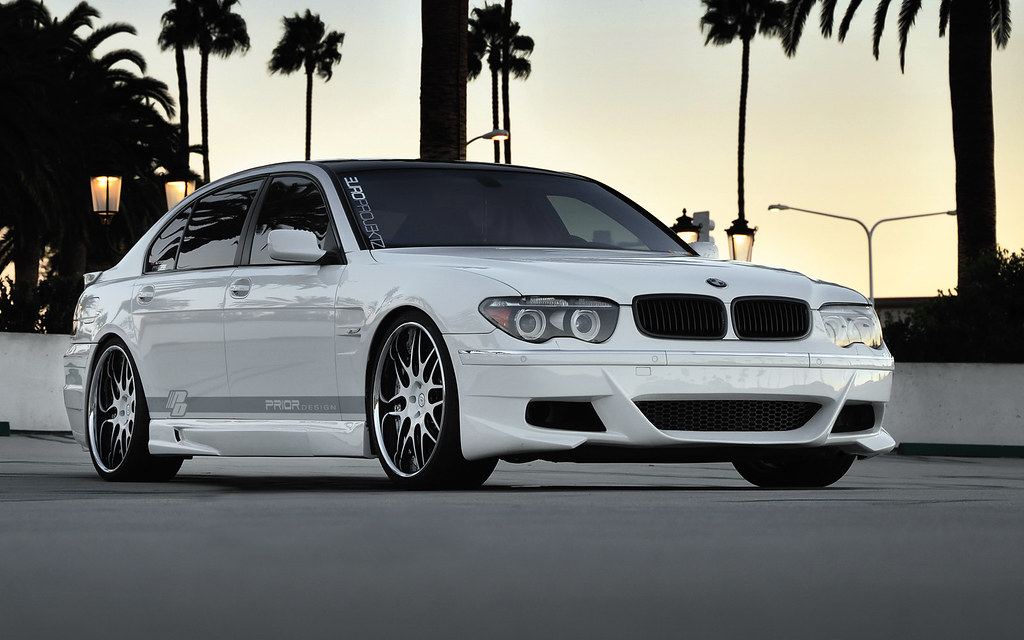
2. **BMW 7 Series**
BMW has long been a top contender in the full-size luxury car market, and the 7 Series lineup is undeniably a flagship. It offers a plethora of features, continually refined with updates like the impressive 2024 refresh, aiming to provide the ultimate in driving pleasure and passenger comfort. This is where BMW throws its technological might and design prowess, promising a blend of performance and prestige that’s hard to ignore. It’s a statement of ambition, a machine built for those who appreciate the finer things in automotive engineering.
Yet, for all its prowess and technological sophistication, the 7 Series does not live up to its name when it comes to holding its value. Consider an original price of $122,475. After a mere five years, this luxury behemoth faces a depreciation rate of 61.8%, plummeting its resale value to around $46,780. The difference? A cool $75,694 evaporated into thin air. That’s a serious chunk of change to lose on a car that’s supposed to represent the pinnacle of luxury.
The reasons behind this financial slide are multifaceted. BMW’s reputation for intricate, tech-heavy systems means that while they’re cutting-edge new, they can become incredibly complex and expensive to maintain as they age. Moreover, the brand’s relentless pace of innovation and frequent refreshes mean that an older 7 Series can quickly feel dated, even if it’s only a few years old, further diminishing its appeal and value on the secondary market.
For a car promising to be a paragon of luxury, watching its value drop so precipitously can be a truly bitter pill to swallow. The context explicitly states that prices “will only get lower” the longer you plan on owning it. It’s a sobering thought that the very attributes that make it a compelling purchase initially – its advanced features and cutting-edge design – are often the same ones that make it a financial challenge down the road. Drivers of these magnificent machines might find themselves wishing for a do-over, hoping to recoup some of that substantial financial loss.
Car Model Information: 2020 Lexus RX 350 Base
Name: BMW 7 Series
Caption: BMW 7 Series (G11)
Manufacturer: BMW
Production: 1977–present
Class: Full-size car,luxury car
BodyStyle: sedan (car)
Predecessor: BMW New Six
Categories: All articles with dead external links, Articles with dead external links from July 2021, Articles with short description, BMW vehicle series, CS1 Chinese-language sources (zh)
Summary: The BMW 7 Series is a full-size luxury sedan manufactured and marketed by the German automaker BMW since 1977. It is the successor to the BMW E3 “New Six” sedan and is now in its seventh generation.
The 7 Series is BMW’s flagship car and is only available in a sedan bodystyle (including long wheelbase and limousine models). It traditionally introduces technologies and exterior design themes before other models in BMW’s lineup.
The first generation of the 7 Series was powered by straight-6 petrol engines, and following generations have been powered by inline-4, straight-6, V8 and V12 engines with both natural aspiration and turbocharging. Since 1995, diesel engines have been optional in the 7 Series.
Unlike the BMW 3 Series and BMW 5 Series sedans, BMW does not offer a full M model, but once offered an M performance variant, the BMW M760 with its 6.6L V12 (at the time the most powerful BMW ever made, not to be confused with BMW 760 6.6 V12 which does not offer the same performance). The Alpina B7 served as the high-performance variant of the 7 Series.
Get more information about: BMW 7 Series
Buying a high-performing used car >>>
Brand: BMW Model: 7 Series
Price: $30,981 Mileage: 81,179 mi.
Read more about: An Unrivaled Eye for the Road: Six Classic Cars in Mick Fleetwood’s Collection That Define True Taste
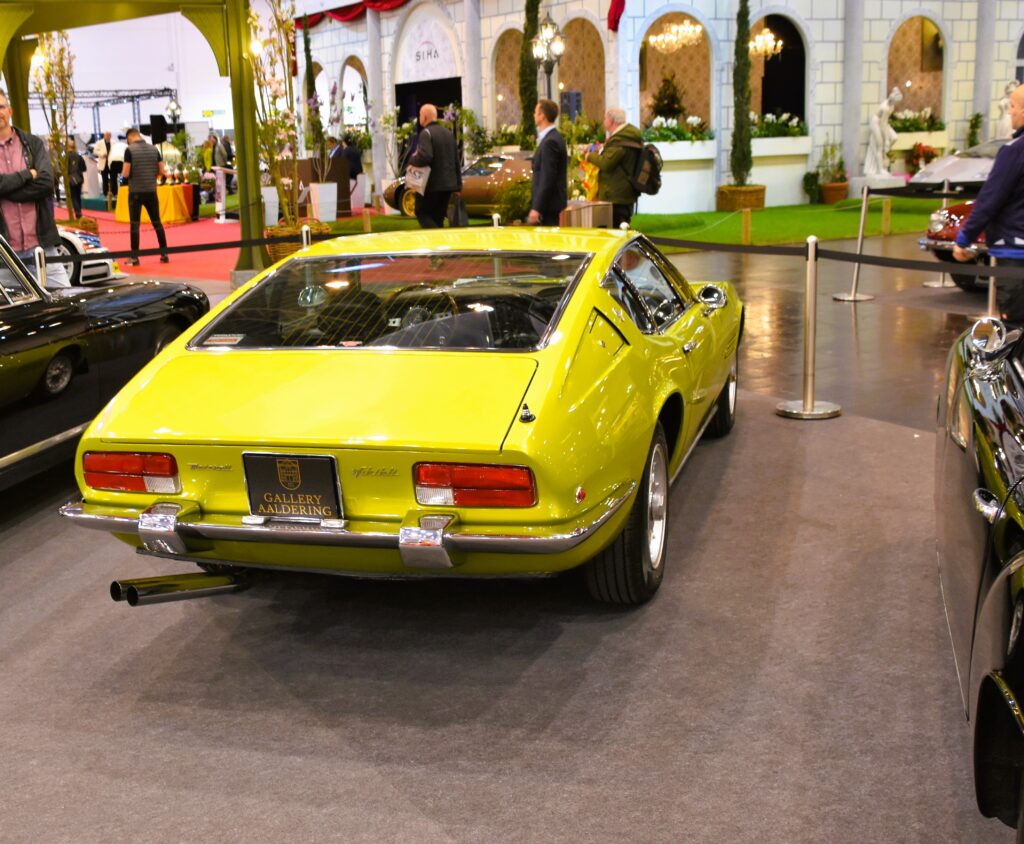
3. **Maserati Ghibli**
The Maserati Ghibli entered the scene as a muscular Italian sports sedan, boasting a stunning exterior that promised excitement and exclusivity. With power options ranging from 345 to over 570 horses, it delivered a potent blend of sporty handling and refined power, all wrapped up in a well-appointed interior. It was envisioned as a more accessible entry point into Maserati ownership, a way to experience that coveted Italian flair without quite the financial leap of its larger siblings.
However, the Ghibli’s journey has taken an unfortunate turn. Discontinued last year, it is now experiencing major depreciation, a trend that began long before its official exit. With an original price of $110,995, its depreciation rate after five years stands at a grim 61.3%, leaving a resale value of approximately $43,000. That’s a staggering difference of $67,950 that has simply vanished from the owner’s pocket.
The discontinuation itself acts as a massive accelerant for depreciation. When a model is no longer produced, market demand often cools considerably, and the perceived long-term support for parts and service can become a concern. The context grimly notes that its sporty handling and luxurious cabin were simply “not enough to save it from the depreciation hit it is bound to take.” It’s a harsh reality that even a “stunning exterior” can’t shield a car from economic forces.
This is another prime example of an Italian siren song leading to financial disappointment. While the Ghibli certainly delivered on its promise of passion and performance, its inability to retain value makes it a significant financial setback for its original buyers. The drivers who embraced this sports sedan as a way to inject some excitement into their lives are likely now feeling the sting of a truly poor investment, making them ponder if that initial thrill was truly worth the subsequent financial sorrow.
Car Model Information: 2014 Maserati Ghibli Base
Name: Maserati Ghibli
Caption: 2018 Maserati Ghibli GranLusso
Manufacturer: Maserati
Assembly: Modena,Grugliasco,Turin
Class: Grand tourer,Executive car
BodyStyle: fastback,coupé,Roadster (automobile),Sedan (automobile)
Production: AM115: 1967–1973,AM336: 1992–1998,M157: 2013–2023
Categories: 1970s cars, 1990s cars, 2010s cars, Articles with short description, CS1 Italian-language sources (it)
Summary: Maserati Ghibli is the name of three different cars produced by Italian automobile manufacturer Maserati: the AM115, a V8 grand tourer from 1967 to 1973; the AM336, a V6 twin-turbocharged coupé from 1992 to 1998; and the M157, an executive saloon from 2013 to 2023.
Ghibli is the Libyan Arabic name for the hot dry south-westerly wind of the Libyan desert.
Get more information about: Maserati Ghibli
Buying a high-performing used car >>>
Brand: Maserati Model: Ghibli
Price: $10,980 Mileage: 83,121 mi.
Read more about: From Showroom Shame to Collector’s Dream: The Flops That Became Automotive Icons
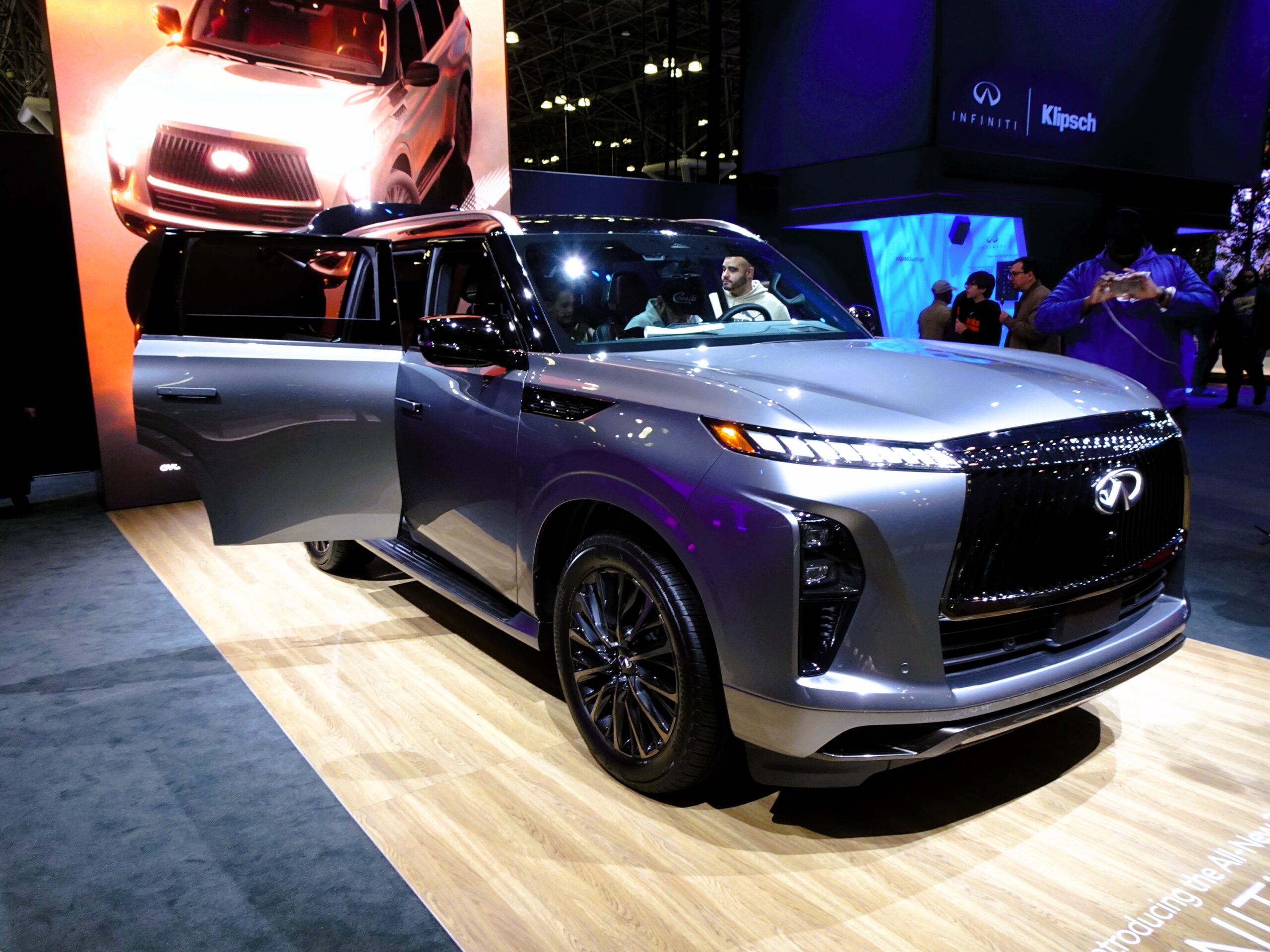
4. **Infiniti QX80**
The Infiniti QX80 stands as a titan of luxury SUVs, known for its imposing presence, robust V8 engine, and an interior that’s rich with high-quality materials and advanced technology. It promises a commanding blend of capability and comfort, designed to tackle various terrains while coddling its occupants in an upscale environment. This is a vehicle for those who demand space, power, and a touch of refinement in their large utility vehicle, providing a premium experience that aims to challenge its European rivals.
But don’t let those “commanding features” fool you into believing it’s a solid investment. The QX80, despite its luxurious facade, is one of the worst SUVs for holding its resale value. With an original price of $82,450, it suffers a 58.1% depreciation rate after five years, leaving a resale value of merely $34,500. The difference? A hefty $47,881 that drivers won’t be seeing again.
The context plainly states, “not many people are after it” on the used market, which is a brutally honest assessment of its depreciation woes. Luxury SUVs, especially those from non-European or less established luxury marques in this segment, often struggle to retain value against the relentless competition from Mercedes-Benz, BMW, and Land Rover. The perceived higher maintenance costs and the quick evolution of in-car technology also contribute to its accelerated decline.
For a vehicle that epitomizes luxury and capability, its rapid descent in value is a hard truth for owners to face. That robust V8 and lavish cabin might offer a great experience, but the financial sting of its depreciation can turn a proud purchase into a significant regret. Imagine driving a vehicle that, after just five years, has lost more than half its original value, highlighting the painful reality of this luxury SUV’s financial trajectory.
Car Model Information: 2023 INFINITI QX80 PREMIUM SELECT
Name: Infiniti QX80
Caption: 2019 Infiniti QX80 (US)
Manufacturer: Nissan
Aka: Infiniti QX56 (2004–2013)
Production: 2004–present
Class: Full-size,luxury SUV
BodyStyle: SUV
Layout: Front-engine, rear-wheel-drive,Front-engine, four-wheel-drive
Predecessor: Nissan Pathfinder#Infiniti QX4
Chassis: Body-on-frame
Categories: 2010s cars, 2020s cars, All-wheel-drive vehicles, All articles with failed verification, All articles with unsourced statements
Summary: The Infiniti QX80 (formerly called the Infiniti QX56 until 2013) is a full-size luxury SUV marketed by Nissan’s luxury division Infiniti since the 2004 model year. The first-generation QX56 was built in the United States and is based on the first-generation Armada. The second-generation model was released in 2010 as a model produced in Japan, which used the sixth-generation Patrol (later also marketed as the second-generation Armada since 2016) as the base vehicle instead. Since the 2014 model year in 2013, the vehicle was renamed to the QX80 as Infiniti renamed their entire product line under a new nomenclature.
Get more information about: Infiniti QX80
Buying a high-performing used car >>>
Brand: Infiniti Model: QX80
Price: $48,992 Mileage: 26,319 mi.
Read more about: Buyer Beware: These 12 Crossovers Turn into Money Pits Past 80,000 Miles
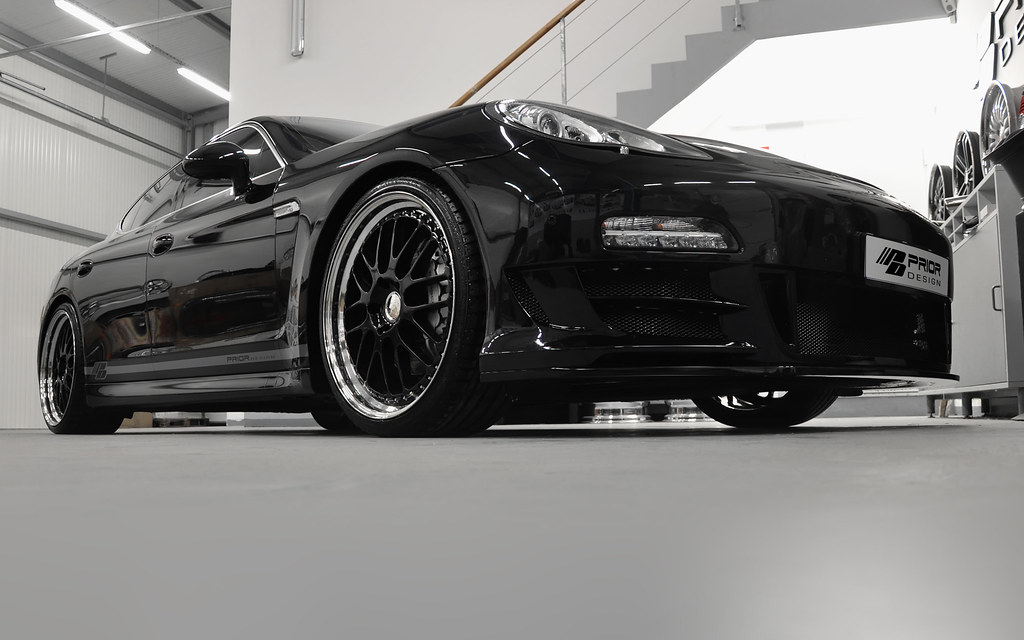
5. **Porsche Panamera**
The Porsche Panamera, when it first arrived, was indeed a unique idea: a Porsche sedan. It aimed to merge the legendary performance DNA of Porsche with the practicality and luxury of a four-door vehicle. The Panamera model line offers luxury vehicles powered by turbocharged V6 or V8 engines, ensuring that signature Porsche thrill. Step inside, and the Germans have provided sophistication through premium materials and cutting-edge technology, making it a compelling package for those who needed more space than a 911 but still craved that Stuttgart pedigree.
However, even with “Porsche Performance DNA” coursing through its veins, the Panamera is fond of losing much of its value over time. An original price of $101,550 becomes a much more modest $47,000 after five years, thanks to a 53% depreciation rate. That’s a cool $53,821 that simply evaporates, a figure substantial enough to make any owner wince in regret. It seems even the famed Porsche badge isn’t immune to the harsh realities of the luxury sedan market.
Perhaps the “unique idea” was a bit *too* unique for a brand traditionally associated with two-door sports cars. While luxury, performance, and technology are all present in spades, the market for a high-performance luxury sedan, especially one that doesn’t quite fit the traditional Porsche mold, can be unforgiving. Maintenance costs associated with such complex, high-performance machinery only add to the long-term financial burden, further driving down desirability on the used market.
So, while you get undeniable “sophistication through premium materials and technology” with a Panamera, you also get a massive value slide that can be tough to stomach. The initial excitement of owning a Porsche sedan quickly gives way to the sobering reality of its rapid depreciation, leaving many drivers to ponder whether the unique experience was worth the significant financial sacrifice in the long run. It’s a powerful car, but its value retention is anything but.
Car Model Information: 2018 Porsche Panamera Base
Name: Porsche Panamera
Caption: 2024 Porsche Panamera (976)
Manufacturer: Porsche
Production: 2009–present
Assembly: Leipzig
Class: Luxury car
Layout: Front-engine, rear-wheel-drive layout
Predecessor: Porsche 989
Sp: uk
Categories: 2010s cars, 2020s cars, All-wheel-drive vehicles, All articles containing potentially dated statements, All articles with unsourced statements
Summary: The Porsche Panamera is a mid- to full-sized luxury car (E-segment or F-segment for LWB in Europe) manufactured and marketed by German automobile manufacturer Porsche. It currently spans across three generations, using a front-engine and rear- or all-wheel drive configuration.
The Panamera debuted at the 13th Auto Shanghai International Automobile Show in April 2009, later launching hybrid and diesel versions in 2011. In April 2013, the company introduced a facelifted model, again at the Shanghai Auto Show, followed by the US introduction of a plug-in hybrid version, the Panamera S E-Hybrid, in November 2013. Porsche launched the second-generation Panamera in 2016, and in November 2023, the third generation was introduced.
The Panamera name, as with the Carrera name, is derived from the Carrera Panamericana race.
Get more information about: Porsche Panamera
Buying a high-performing used car >>>
Brand: Porsche Model: Panamera
Price: $39,880 Mileage: 56,253 mi.
Read more about: Get Ready to Rev Your Engines: A Deep Dive Into Val Kilmer’s Jaw-Dropping Car Collection, Both On-Screen and Off
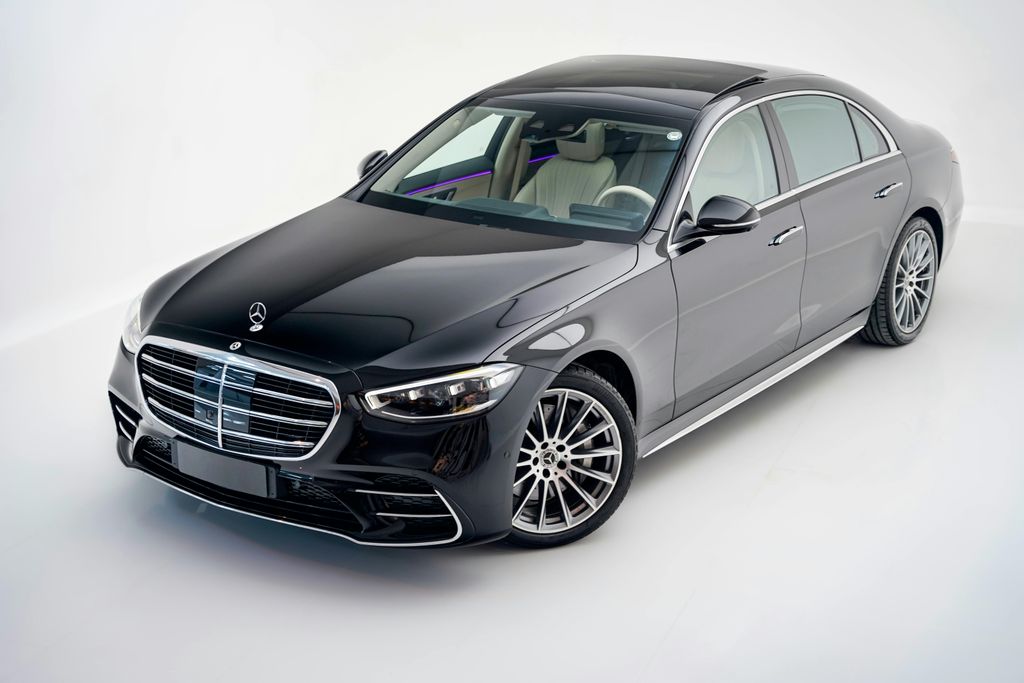
6. **Mercedes-Benz S-Class**
For generations, the Mercedes-Benz S-Class has epitomized “the luxury car.” It’s a rolling fortress of technological innovation, unparalleled comfort, and undeniable prestige. With powerful V12 and V8 engine options, it consistently sets the benchmark for what a high-end sedan should be. Many see it as a more attainable, yet equally opulent, alternative if you “don’t want to blow half a million bucks on a Rolls Royce.” It’s the kind of car that signifies arrival, providing an experience that’s both indulgent and commanding.
But even the undisputed king of luxury sedans is not immune to the ruthless hand of depreciation. If you max out on options, that initial price tag can hit $182,250. After just five years, its depreciation rate is a stark 55.7%, leaving an estimated resale value of $80,275. The sheer difference here is monumental: a staggering $101,975. The context quite frankly states, “the depreciation has made it a lot cheaper,” which is an understatement of epic proportions.
This kind of financial freefall, even for a car of the S-Class’s stature, is largely due to the very features that make it so desirable new. Its cutting-edge technology, bespoke materials, and intricate engineering become incredibly expensive liabilities for subsequent owners once warranties expire. The cost of advanced repairs and the rapid evolution of luxury tech mean that what was once state-of-the-art can quickly become outdated and pricey to maintain, scaring off potential used buyers.
More than a hundred grand evaporating in half a decade is a tough pill to swallow for any car owner. The S-Class may offer a “comfortable place to be in,” but the comfort of its cabin is starkly contrasted by the financial discomfort of its value loss. It’s a truly magnificent machine, but the brutal economics of its depreciation are a stark reminder that even the most prestigious badges come with a significant, and often painful, long-term financial caveat. For those who bought new, the initial thrill can fade quickly when faced with this economic reality.
Read more about: Bawse-Level Bling: The 10 Most Shocking Custom Paint Jobs in Rick Ross’s Legendary Car Collection
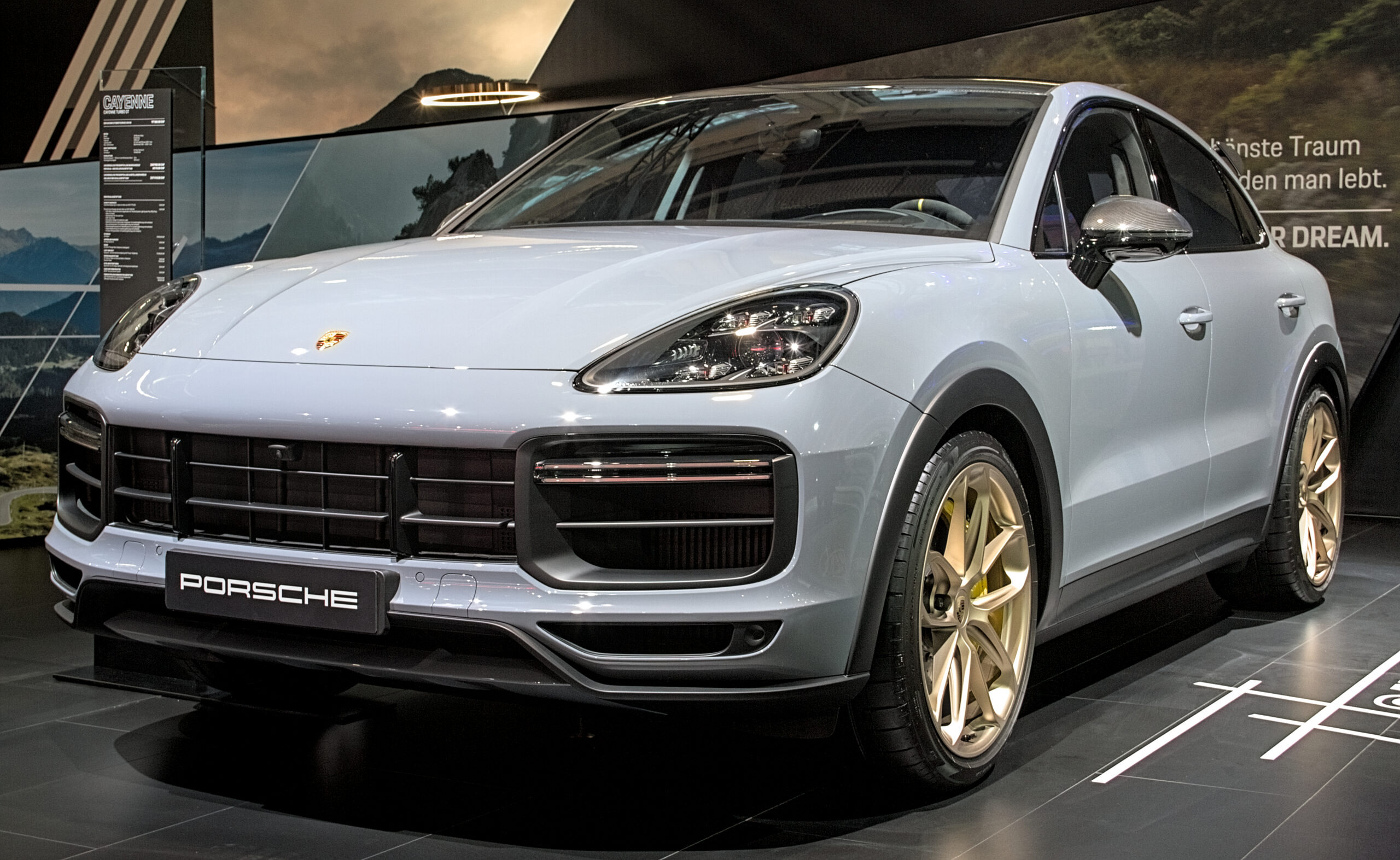
7. **Porsche Cayenne**
The Porsche Cayenne rolled onto the scene years ago, proving that a performance brand could successfully build an SUV. It comes wrapped in sporty bodywork, offers room for five passengers, and packs genuine “Porsche Performance DNA” through its rumbly V8 and hybrid V6 options. It’s a vehicle that promises the best of both worlds: utility for the family or adventure, coupled with the exhilarating driving dynamics one expects from a Porsche. It was designed to conquer both the winding road and the school run with equal aplomb.
However, for all its sporting pretensions and luxury packaging, the Cayenne doesn’t quite replicate the value retention success of its two-door siblings. With an original price of $114,550, it faces a 50% depreciation rate after five years, bringing its resale value down to around $57,000. That’s a difference of $57,275, a substantial financial hit for any owner. The context explicitly notes, “Unlike the 911, the Cayenne loses much of its value over time, filling the used market with cheaper deals.”
The fundamental issue here is market perception and competition. While it’s a Porsche, the SUV segment is fiercely competitive, and buyers often prioritize different attributes in a used luxury SUV compared to a used sports car. The high initial purchase price and the inevitable costly maintenance associated with a high-performance German vehicle also deter many second-hand buyers. These factors combine to ensure that the Cayenne, for all its merits, struggles to maintain its lofty perch on the value ladder.
So, while you might get that incredible “Porsche Performance DNA” and a supremely capable SUV, you also sign up for a significant financial blow. That “sporty bodywork” might look fantastic in your driveway, but it’s also a stark reminder of the rapidly deflating bank account that comes with it. For drivers who invested in a new Cayenne, the reality of finding it “filling the used market with cheaper deals” can be a source of genuine regret, making them wish they had opted for something with less financial gravity.”
The initial seven vehicles we unspooled for you showcased a rather disheartening truth: the glitz and glamour of a luxury badge often come with a hidden financial gut punch. But hold onto your seatbelts, because the ride isn’t over yet. We’re about to delve into another eight examples of automotive excellence that, despite their undeniable appeal and engineering prowess, turn into veritable money pits for their owners. It’s a sobering look at how even the most desirable machines can become sources of significant regret, forcing buyers to wish they could rewind time and hit that mythical ‘unbuy’ button.
Car Model Information: 2020 Porsche Cayenne Base
Name: Porsche Cayenne
Manufacturer: Porsche
Production: August 2002–present
ModelYears: 2003–present
Class: crossover SUV
Layout: Front-engine, four-wheel-drive
Categories: 2010s cars, 2020s cars, All-wheel-drive vehicles, All articles needing additional references, All articles with dead external links
Summary: The Porsche Cayenne is a series of automobiles manufactured by the German company Porsche since 2002. It is a luxury crossover SUV, and has been described as both a full-sized and a mid-sized vehicle. The first generation was known within Porsche as the Type 9PA (955/957) or E1. It was the first V8-engined vehicle built by Porsche since 1995, when the Porsche 928 was discontinued. It is also Porsche’s first off-road variant vehicle since its Super and Junior tractors of the 1950s, as well as the first production Porsche with four doors. Since 2014, the Cayenne has been sold alongside a smaller Porsche SUV, the Macan.
The second-generation Cayenne (Type 92A or E2) was unveiled at the 2010 Geneva Motor Show in March. The Cayenne shares its platform, body frame, doors, and electronics with the Volkswagen Touareg and Audi Q7. It received a facelift in 2014 with minor external changes, and introduced a new plug-in E-Hybrid version with its public launch at the Paris Motor Show. Since 2008, all engines have featured direct injection technology. The third generation (Type 9YA or E3) was unveiled in 2017 in the German city of Stuttgart.
Get more information about: Porsche Cayenne
Buying a high-performing used car >>>
Brand: Porsche Model: Cayenne
Price: $42,290 Mileage: 35,242 mi.
Read more about: 15 Vehicles Millennials Are Steering Clear Of: Unpacking the Generational Divide in Automotive Appreciation
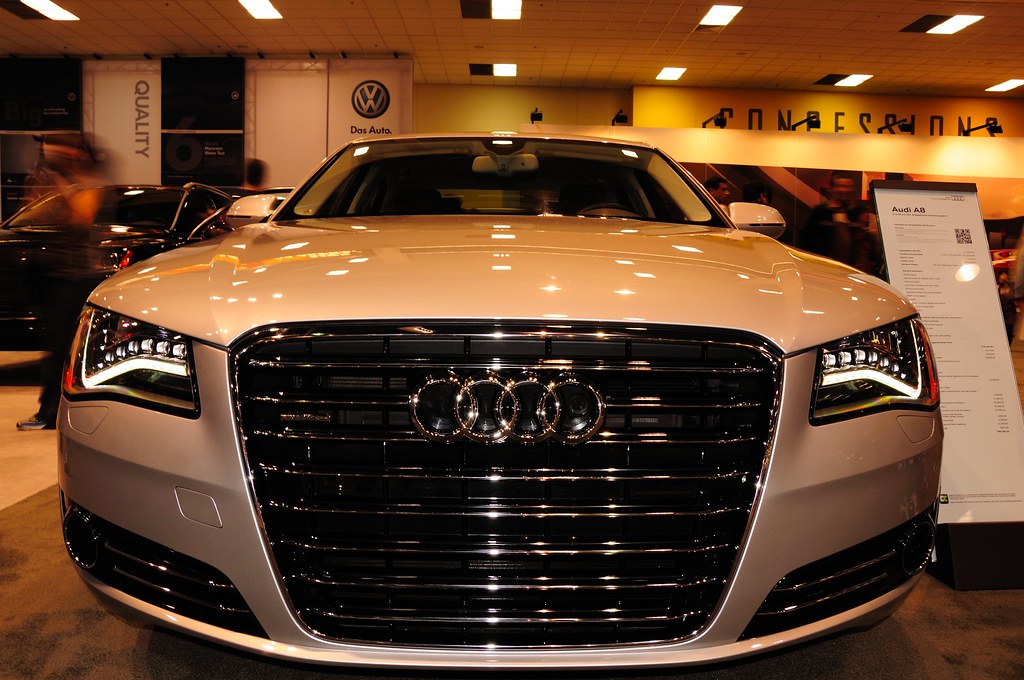
8. **Audi A8**
Ah, the Audi A8. It’s a car that truly exemplifies understated luxury, boasting a beautiful and spacious sedan body that feels like a private lounge on wheels. With its legendary Quattro all-wheel-drive system, it offers a confident, composed ride regardless of the weather, and it’s absolutely packed with features designed to pamper its occupants. For anyone seeking a sophisticated, comfortable, and technologically advanced executive sedan, the A8 presents a compelling, seemingly bulletproof package.
However, beneath that polished, dignified exterior lies a rather shocking financial secret. For all its merits and impressive engineering, it’s genuinely surprising how quickly this luxurious ride sheds its value. Starting with an original price tag of $93,295, the A8 sees a brutal 55% depreciation rate after just five years, leaving its resale value somewhere around $42,200. That’s a staggering $42,266 difference, a sum that could easily buy you a very respectable new car on its own.
So, what gives? Why does such a magnificent machine bleed value so rapidly? The context points to a confluence of factors: its high initial cost sets a lofty benchmark, but it’s the fiercely competitive luxury car market that truly devours its resale potential. When new models arrive with even more groundbreaking tech, older A8s quickly appear less enticing. Couple that with the high maintenance costs that inevitably come with German luxury engineering, and you have a recipe for rapid depreciation.
For an owner who thought they were investing in long-term elegance and cutting-edge technology, the reality of the A8’s value plunge can be a particularly bitter pill. That initial pride of ownership can quickly morph into financial frustration when you realize just how much of your hard-earned money has simply evaporated. It’s a harsh lesson that sometimes, even the most beautiful and well-equipped sedans carry a significant financial caveat.
Car Model Information: 2019 Audi A8 L 55
Name: Audi A8
Manufacturer: Audi AG
Assembly: Neckarsulm
Production: #D2
Class: Full-size,luxury car
BodyStyle: sedan (automobile)
Platform: List of Volkswagen Group platforms
Layout: FF layout
Related: Audi S8
Predecessor: Audi V8
Categories: 2000s cars, 2010s cars, 2020s cars, All-wheel-drive vehicles, All articles lacking reliable references
Summary: The Audi A8 is a full-size luxury sedan manufactured and marketed by the German automaker Audi since 1994. Succeeding the Audi V8, and now in its fourth generation, the A8 has been offered with either front- or permanent all-wheel drive and in short- and long-wheelbase variants. The first two generations employed the Volkswagen Group D platform, with the current generation deriving from the MLB platform. After the original model’s 1994 release, Audi released the second generation in late 2002, the third in late 2009, and the fourth and current iteration in 2017. Noted as the first mass-market car with an aluminium chassis, all A8 models have used this construction method co-developed with Alcoa and marketed as the Audi Space Frame.
A mechanically upgraded, high-performance version of the A8 debuted in 1996 as the Audi S8. Produced exclusively at Audi’s Neckarsulm plant, the S8 is fitted standard with Audi’s quattro all-wheel drive system. The S8 was only offered with a short-wheelbase for the first three generations, being joined by a long-wheelbase variant for the fourth generation.
Get more information about: Audi A8
Buying a high-performing used car >>>
Brand: Audi Model: A8
Price: $28,330 Mileage: 60,140 mi.
Read more about: No More Panic Buttons: 11 Genius Phone Features That Seriously Soothe Your Soul (And Stop Those Mini Heart Attacks)
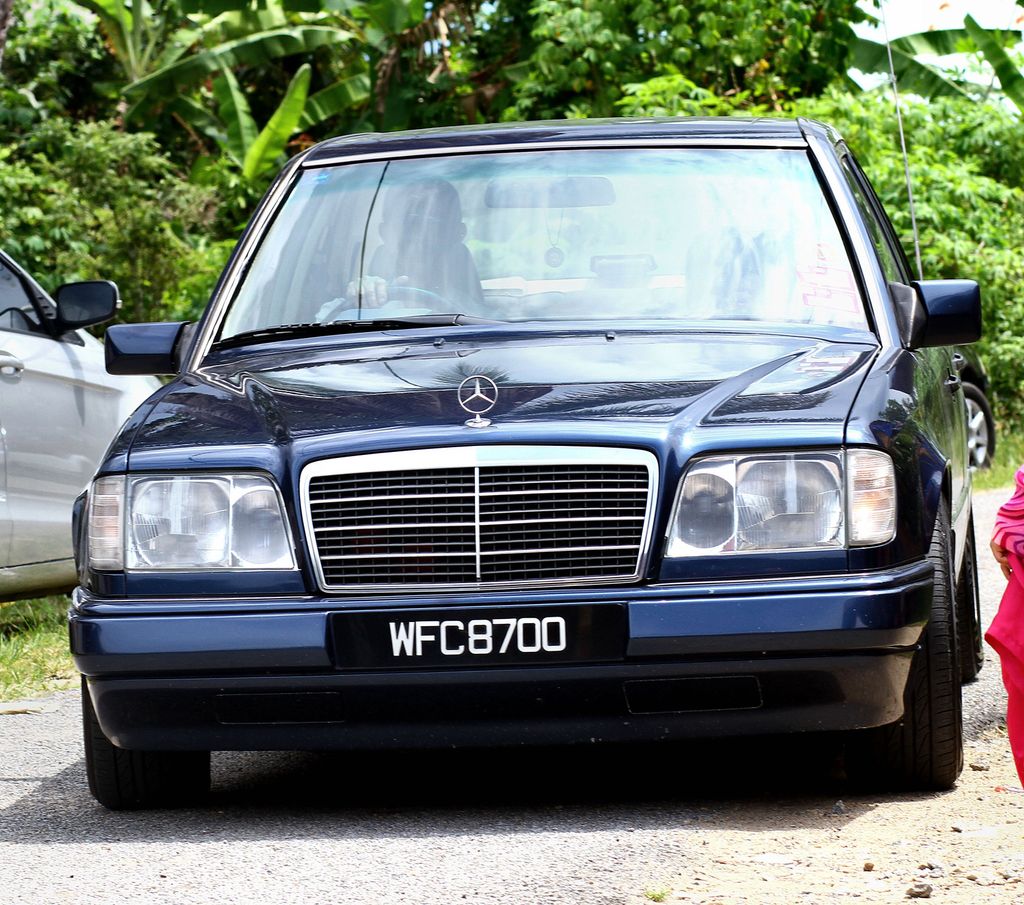
9. **Mercedes-Benz E-Class**
The Mercedes-Benz E-Class is practically synonymous with aspirational luxury, offering a diverse lineup that includes sedans, coupes, convertibles, and even a station wagon. Stepping into any E-Class is an immediate immersion into Mercedes’s unwavering commitment to quality and luxury. Every detail, from the finely crafted materials to the smooth, refined drive, speaks volumes about the phenomenal efforts poured into its design and engineering. It’s a true benchmark for upscale motoring.
Yet, despite this phenomenal commitment to luxury and quality, the E-Class doesn’t escape the clutches of depreciation. With an original price of $73,540, this sophisticated machine will see its value dip by 53% after five years, leaving owners with a resale value of around $34,750. That’s a difference of $38,788 – a significant chunk of change to watch disappear, especially when you’ve bought into the Mercedes promise of enduring excellence.
The reality is that while the E-Class is undeniably a masterpiece when new, the relentless pace of technological advancement in the luxury segment means that what’s cutting-edge today can feel a generation behind tomorrow. Newer models arrive with even more dazzling screens and semi-autonomous features, making slightly older examples less desirable. Moreover, the inherent complexity and higher costs associated with maintaining a luxury German vehicle as it ages contribute heavily to its struggle on the used market.
So, while the E-Class will always offer a comfortable, high-quality experience, its owners will inevitably face significant depreciation over time. It’s a tough situation for anyone who cherishes their Mercedes, realizing that the initial joy of its pristine luxury is slowly eroded by the cold, hard numbers of its diminishing value. It’s a stark reminder that even the most prestigious badges aren’t immune to the unforgiving economics of the automotive world.
Read more about: Bawse-Level Bling: The 10 Most Shocking Custom Paint Jobs in Rick Ross’s Legendary Car Collection
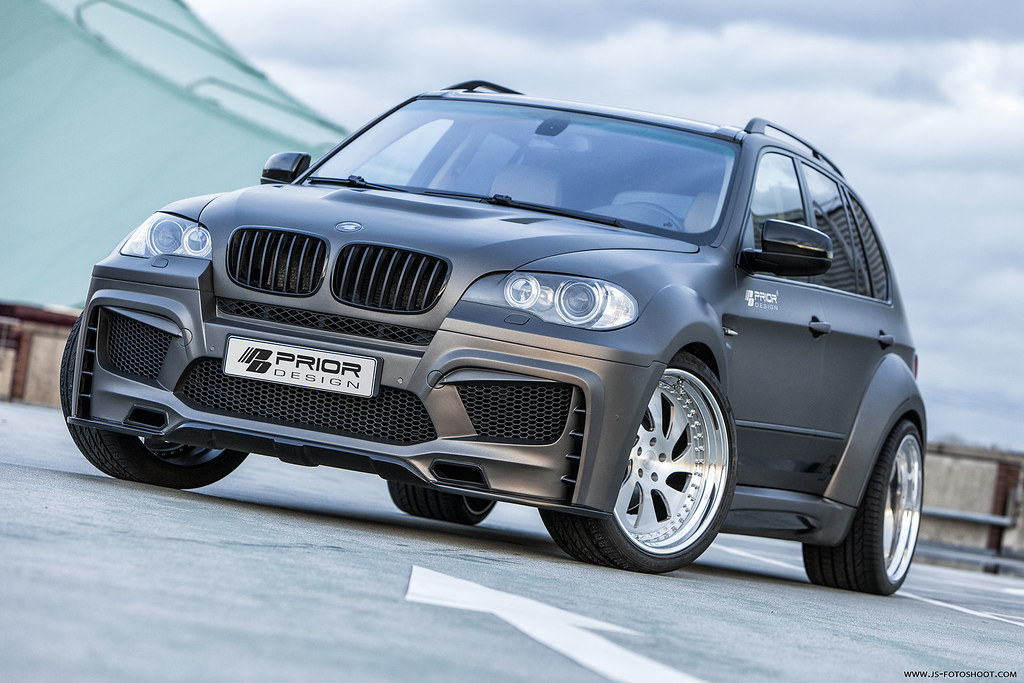
10. **BMW X5**
For those who crave the perfect blend of luxury and performance wrapped in a stylish SUV package, the BMW X5 often tops the list. It’s a versatile beast, offering a range of compelling engines, from the smoothly silent inline-six to a gloriously rumbly V8, ensuring there’s a power plant to match every enthusiast’s desire. Step inside, and you’re greeted by a truly luxurious cabin, adorned with high-quality materials and brimming with premium tech features. It’s an SUV that promises both thrills and opulent comfort.
But here’s the unglamorous truth: while the X5 offers an incredible ownership experience, it also comes with a significant financial caveat – a high depreciation rate that could easily turn into a trap for unsuspecting buyers. An original price of $90,295 takes a hefty hit, dropping by 54.7% after five years, settling at a resale value of around $40,800. That’s a staggering $49,411 loss, making you wonder if all that luxury and performance were truly worth the bleeding bottom line.
The reasons for this financial hemorrhage are similar to its sedan brethren. BMW’s rapid refresh cycles mean that a few-year-old X5 can quickly feel outmoded compared to the latest iteration. Furthermore, the high-performance engines and advanced technology, while brilliant new, translate into potentially eye-watering maintenance and repair costs once out of warranty. These factors make a used X5 a less appealing prospect for second owners, driving down its value.
For drivers who initially sought out the X5 for its blend of driving dynamics and plush comfort, the realization of such rapid depreciation can be a real sting. It’s a powerful and luxurious machine, no doubt, but the financial gravity pulling its value down ensures that the excitement of ownership can be heavily tempered by the sorrow of a vanishing investment. Before getting one, it’s vital to be aware that the high depreciation rate is not just a number, but a substantial financial burden.
Car Model Information: 2022 BMW X5 xDrive40i
Name: BMW X5
Manufacturer: BMW
Class: Mid-size,luxury vehicle,crossover SUV
BodyStyle: SUV
Production: 1999–present
Layout: Front-engine, four-wheel-drive layout,Front-engine, rear-wheel-drive layout
Categories: 2000s cars, 2010s cars, All-wheel-drive vehicles, All articles with unsourced statements, Articles with short description
Summary: The BMW X5 is a mid-size luxury crossover SUV produced by BMW. The X5 made its debut in 1999 as the E53 model. It was BMW’s first SUV. At launch, it featured all-wheel drive and was available with either a manual or automatic gearbox. The second generation was launched in 2006, and was known internally as the E70. The E70 featured the torque-split capable xDrive all-wheel drive system mated to an automatic gearbox. In 2009, the X5 M performance variant was released as a 2010 model.
BMW marketed the X5 officially as a “Sports Activity Vehicle” (SAV), rather than an SUV, to indicate its on-road handling capability despite its large dimensions. The X5 signaled a shift away from the utilisation of body-on-frame construction, in favour of more modern monocoque chassis construction. Although the Mercedes-Benz M-Class was introduced more than a year prior to the X5, the X5 was the first to utilise a monocoque chassis. The M-Class used body-on-frame construction until its second generation.
The X5 is primarily manufactured in North America, at BMW Group Plant Spartanburg. Assembly operations also took place in Russia by Avtotor until February 2022, along with operations in India, Indonesia, Malaysia, and Thailand. The X5 is also modified for armoured security versions, at the BMW de México Toluca plant.
The automaker’s SAV series, which was started by the X5, has expanded with derivations of other number-series BMWs. This began in 2003 with the X3, and continued in 2008 with the X6 (which shares its platform with the X5).
Get more information about: BMW X5
Buying a high-performing used car >>>
Brand: BMW Model: X5
Price: $37,999 Mileage: 39,525 mi.
Read more about: 15 Vehicles Millennials Are Steering Clear Of: Unpacking the Generational Divide in Automotive Appreciation

11. **Jaguar XF**
Ah, the Jaguar XF, a magnificent example of British engineering at its finest. It’s a car designed to deliver a truly thrilling ride, thanks to its polished handling and the choice of either a spirited turbocharged four-cylinder or a silken smooth V6. Beyond its dynamic capabilities, the XF boasts a stunning exterior that exudes sophistication and a luxurious cabin that absolutely screams opulence. It’s a vehicle that promises a uniquely refined and engaging driving experience, a true alternative to its German rivals.
However, beneath that veneer of British elegance and performance, the Jaguar XF also screams depreciation – and not in a good way. With an original price of $54,755, this otherwise desirable sedan takes a rather significant tumble, with a 54% depreciation rate after five years. This leaves its resale value languishing at around $25,000, representing a substantial loss of $29,182. That sounds like a pretty bad investment, doesn’t it?
The struggles of the XF in retaining its value can be attributed to several factors. While Jaguar has its loyalists, it often battles against the dominant German brands in the luxury segment. Perceived reliability issues as they age, coupled with generally higher parts and labor costs for maintenance, tend to deter used car buyers. The market simply doesn’t value a used XF as highly as its initial charm might suggest.
So, while the stunning exterior and luxurious cabin might portray opulence, the underlying financial reality paints a different picture. For drivers drawn to its unique blend of performance and luxury, the rapid value loss can quickly turn a dream car into a financial nightmare. If you’re considering getting one, the XF serves as a potent reminder that even a thrilling ride and polished handling aren’t enough to counteract the relentless force of depreciation.
Car Model Information: 2021 Jaguar XF SE
Categories: All set index articles, Articles with short description, Jaguar vehicles, Set index articles, Short description is different from Wikidata
Summary: Jaguar XF may refer to:
Jaguar XF (X250) (2007–2015), an executive/luxury mid-size sports saloon car
Jaguar XF (X260) (2015–2024), the second generation of the executive/mid-size luxury sports saloon
Get more information about: Jaguar XF
Buying a high-performing used car >>>
Brand: Jaguar Model: XF
Price: $32,995 Mileage: 32,933 mi.
Read more about: The Real Cost of Ownership: 10 Sedans That Become Money Pits After Five Years (And How to Avoid Them)
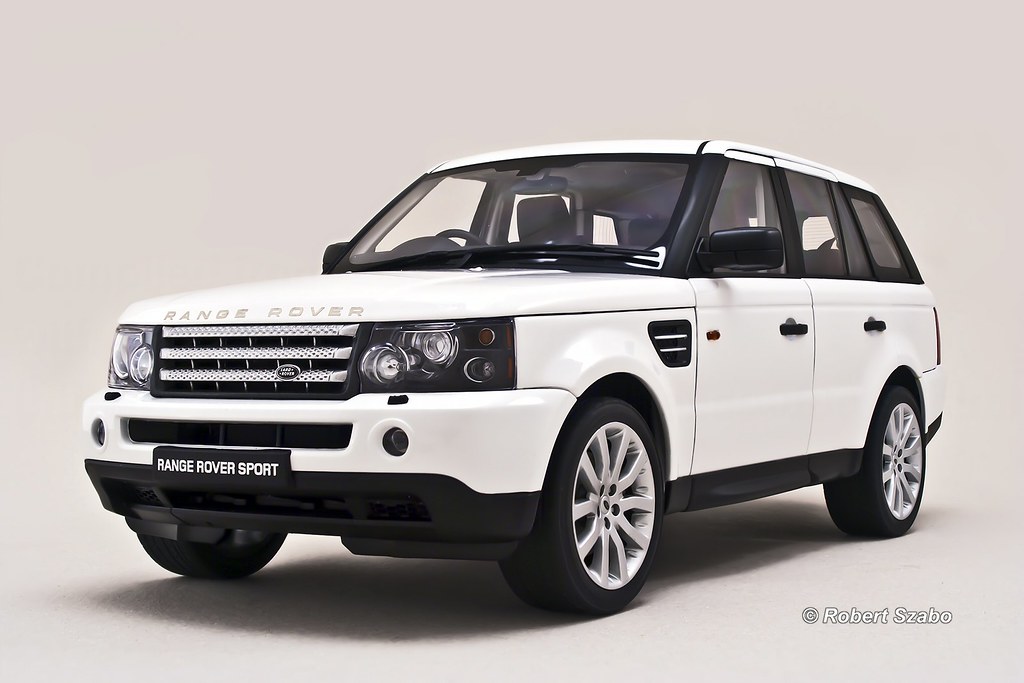
12. **Land Rover Range Rover**
The Land Rover Range Rover isn’t just an SUV; it’s a statement, a flagship that pioneered the very concept of the bonafide luxury SUV in the U.S. market. Equipped with powerful V8 engines, it’s a master of duality, excelling both on the asphalt and far off the beaten path. It represents the pinnacle of go-anywhere capability fused with peerless luxury, promising an experience that few other vehicles can match. For many, it’s the ultimate status symbol, combining ruggedness with refined comfort.
But even a vehicle of such iconic status and higher price tag isn’t immune to the financial reality of value loss. Despite its imposing presence and undeniable prestige, you simply shouldn’t expect it to maintain its resale value if you plan to keep it longer. With an original price of $109,025, the Range Rover suffers a 53.9% depreciation rate after five years, bringing its resale value down to around $50,266. That’s a staggering $58,758 difference, money gone with the wind.
The context here is clear: the depreciation will make it a lot cheaper. While incredibly capable and luxurious new, Range Rovers are notorious for their complex engineering, which translates into incredibly expensive out-of-warranty repairs and maintenance. The prospect of hefty service bills and the availability of newer, updated models often scare off potential used buyers, pushing down values dramatically.
For an owner who invested in what they believed was a robust and enduring symbol of luxury, the rapid descent in value can be incredibly disheartening. The powerful V8 and its unmatched off-road prowess might deliver immense satisfaction, but the brutal economics of its depreciation are a stark reminder that even automotive royalty has feet of clay when it comes to long-term financial retention. It’s a truly magnificent machine, but its value performance is anything but.
Car Model Information: 2020 Lexus RX 350 Base
Caption: 2022 Range Rover SE P440e (L460, fifth generation, United Kingdom)
Aka: unbulleted list
Name: Range Rover
Manufacturer: unbulleted list
Production: 1969–present
Assembly: unbulleted list
Class: unbulleted list
Layout: Front-engine, four-wheel-drive layout
Sp: uk
Categories: 1980s cars, 1990s cars, 2000s cars, 2010s cars, 2020s cars
Summary: The Land Rover Range Rover, generally shortened to Range Rover, is a 4WD luxury mid to full size crossover marque and sub-brand of Jaguar Land Rover, owned by India-based Tata Motors. The Range Rover line was launched in 1970 by British Leyland and since 2022 is in its fifth generation.
Additional models have been launched under the Range Rover name, including the Range Rover Sport, Range Rover Evoque, and Range Rover Velar.
Get more information about: Range Rover
Buying a high-performing used car >>>
Brand: Land Rover Model: Range Rover
Price: $30,981 Mileage: 81,179 mi.
Read more about: No More Panic Buttons: 11 Genius Phone Features That Seriously Soothe Your Soul (And Stop Those Mini Heart Attacks)
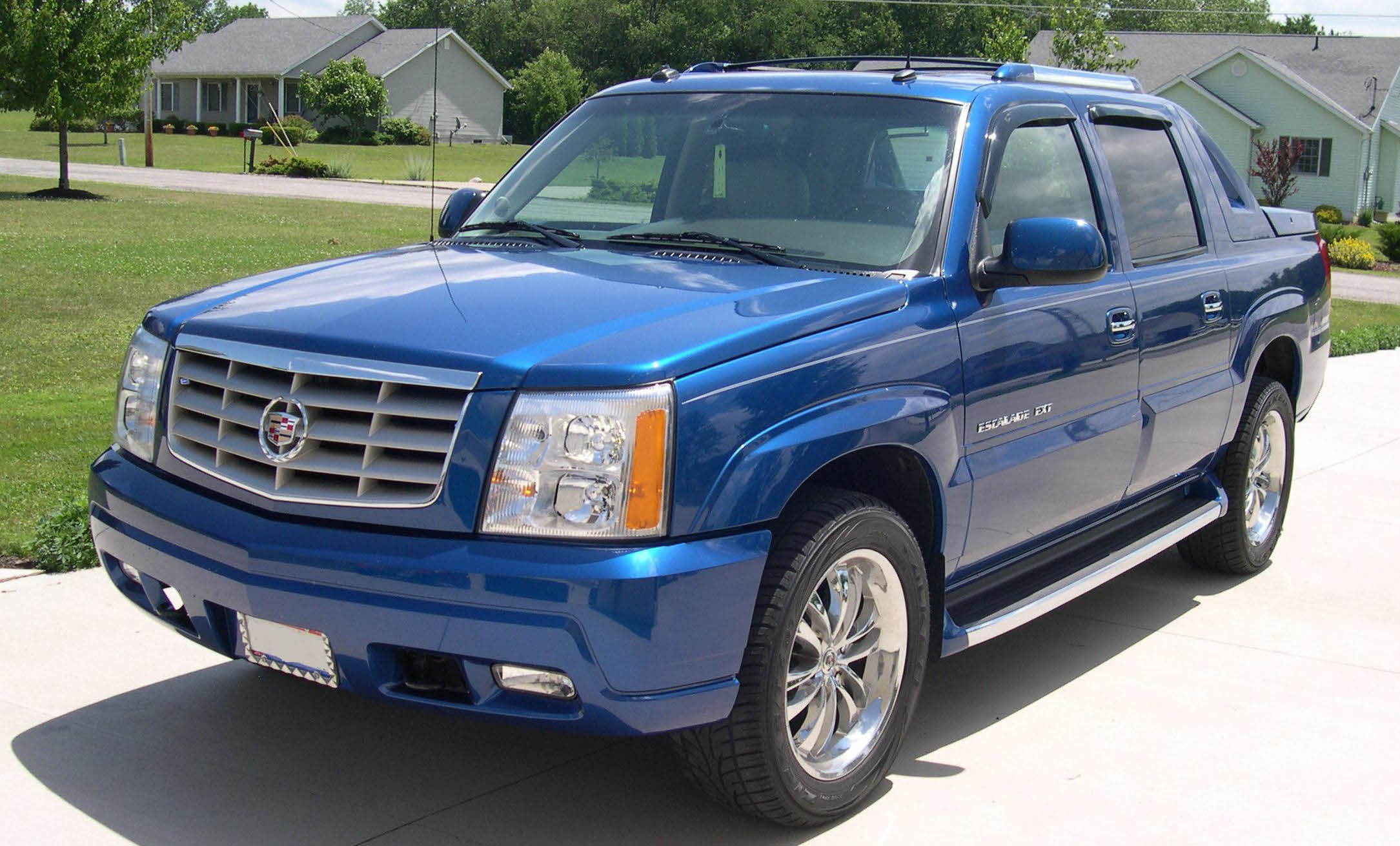
13. **Cadillac Escalade**
The Cadillac Escalade isn’t just an SUV; it’s an American institution, arguably one of the best luxury SUVs money can buy. From its earliest days, the brand has been intricately tied to a symbol of high social status, and the Escalade continues to embody this legacy with its imposing size, luxurious interior, and powerful presence. It’s the kind of vehicle that commands attention and makes a definitive statement wherever it goes.
Yet, despite its undeniable status and popularity, the Escalade also experiences a rather rapid decline in value on the used market. While it retains its symbolic power, the price numbers are decreasing as the Escalade depreciates rapidly. If you max out on options, an original price tag of $152,295 can drop precipitously, with a 56.5% depreciation rate after just five years. This leaves a resale value of about $66,000, translating to a monumental $86,133 financial hit.
The reasons for this rapid depreciation stem from several factors unique to the large luxury SUV segment. Its sheer size and often thirsty engines mean higher running costs for subsequent owners. Furthermore, the constant evolution of technology and luxury features in this segment means that even a few years old, an Escalade can start to feel less cutting-edge compared to brand-new rivals. The sheer volume of these vehicles sold also means a relatively saturated used market, driving prices down.
For an owner who bought into the Escalade’s promise of enduring status and supreme luxury, facing such a substantial financial loss can be a tough pill to swallow. That iconic badge and commanding presence might still turn heads, but the stark reality of nearly $90,000 evaporating in five years certainly turns stomachs. It’s a powerful reminder that while the Escalade excels in conveying status, it struggles significantly in retaining its monetary value.
Car Model Information: 2021 Cadillac Escalade Sport
Name: Cadillac Escalade
Caption: Fifth generation Cadillac Escalade
Manufacturer: Cadillac
Production: 1998–present,2002–present (ESV),2001–2013 (EXT),2008–2013 (Hybrid)
ModelYears: 1999–2000,2002–present
Class: Full-size,luxury car,sport utility vehicle
Related: ubl
Layout: Front-engine, rear-wheel drive layout,Front-engine, four-wheel drive layout
Categories: 2000s cars, 2010s cars, 2020s cars, All-wheel-drive vehicles, All Wikipedia articles in need of updating
Summary: The Cadillac Escalade is a full-size luxury SUV manufactured by General Motors and marketed by Cadillac as its first major entry into the SUV market. The Escalade was introduced for the 1999 model year in response to an influx of new luxury SUVs in the late 1990s including the Mercedes-Benz M-Class, Range Rover, Lexus LX, and Ford’s 1998 debut of the Lincoln Navigator. The Escalade project went into production only ten months after it was approved. The Escalade is built in Arlington, Texas.
The term “escalade” refers to a siege warfare tactic of scaling defensive walls or ramparts with the aid of ladders or siege towers. More generally, it is a French word which is the noun-equivalent form of the French verb escalader, which means “to climb or scale”.
The Escalade is currently sold in North America and select international markets (Europe and Asia) where Cadillac has official sales channels. The Escalade ESV (Escalade Stretch Vehicle) is sold in North America, Russia, and the Middle East, but is only available by special order in some international markets. The right-hand-drive Escalade and Escalade ESV are available through third-party conversion specialists without official agreement with Cadillac in Australian, Oceanic, and Japanese markets.
On August 8, 2023, GM presented the Escalade IQ, an all-electric version of the Escalade, and the third model in Cadillac’s EV line, after the Celestiq, and Lyriq. It is expected to go on sale in late 2024 for the 2025 model year, with a starting price of $130,000.
The Escalade has gone through five generations, the most recent (the fifth) prsented in 2021, noted for its technology and self-driving capability. The fifth generation Escalade is nearly two metres high, and was criticized by The Verge for its excessive size and hazard to pedestrians.
Get more information about: Cadillac Escalade
Buying a high-performing used car >>>
Brand: Cadillac Model: Escalade
Price: $62,850 Mileage: 58,494 mi.
Read more about: Bawse-Level Bling: The 10 Most Shocking Custom Paint Jobs in Rick Ross’s Legendary Car Collection

14. **BMW 5 Series**
The BMW 5 Series has long been considered the quintessential executive sedan, a perfect blend of sportiness and luxury. Especially after its 2024 refresh, it remains a stunner on the road, captivating with its elegant lines and dynamic posture. Under the hood, it offers a versatile range of engines, from smooth turbo-fours to powerfully aggressive V8s. Inside, the cabin is a masterclass in design, showcasing premium materials and advanced technology that elevate the driving experience.
However, even with such a great lineup and an undeniable presence, the 5 Series unfortunately suffers from rather bad resale numbers due to depreciation. An original price of $82,495 will see a painful 55.3% depreciation rate after five years, leaving its resale value at around $36,900. That’s a significant financial hit of $45,572, money that could have been saved or invested elsewhere. It’s a bitter reality for those who love their Bavarian beauties.
The reasons for this significant value drop are multifaceted. Like many German luxury sedans, the 5 Series is packed with complex technology that can become expensive to maintain once out of warranty, deterring second-hand buyers. Furthermore, BMW’s aggressive model refresh cycles mean that a 5-year-old model, no matter how good, can quickly feel dated compared to the latest offerings, thus diminishing its appeal on the used market.
For an owner who cherishes the blend of performance, luxury, and advanced technology that the 5 Series offers, the knowledge of such rapid depreciation can cast a long shadow over the ownership experience. The initial thrill of driving a sophisticated, dynamic sedan slowly gives way to the sobering reality of a significant financial setback. It’s a powerful testament to the fact that even a stunner on the road can be a heartache in the bank account.
Car Model Information: 2020 Lexus RX 350 Base
Name: BMW 5 Series
Manufacturer: BMW
Production: 1972–present
Class: Executive car
BodyStyle: Sedan (automobile)
Layout: Front-engine, rear-wheel-drive,Front-engine, all-wheel-drive
Predecessor: BMW New Class
Categories: 1980s cars, 1990s cars, 2000s cars, 2010s cars, 2020s cars
Summary: The BMW 5 Series is an executive car manufactured and marketed by BMW since 1972. It is the successor to the BMW New Class sedans and is currently in its eighth generation. The car is sold as either a sedan or, since 1991, a station wagon (marketed as “Touring”). A 5-door fastback (marketed as “Gran Turismo”) was sold between 2009 and 2017. Each successive generation has been given an internal G-code designation since 2017. Previously, a F-code designation was used between 2010 and 2016, while an E-code designation was used between 1972 and 2010. These are used to distinguish each model and generation from each other.
The first generation of the 5 Series was powered by naturally aspirated four-cylinder and six-cylinder petrol engines. Following generations have been powered by four-cylinder, six-cylinder, V8 and V10 engines that are either naturally aspirated or turbocharged. Since 1982, diesel engines have been included in the 5 Series range.
The 5 Series is BMW’s second-best-selling model after the 3 Series. On 29 January 2008, the 5 millionth 5 Series was manufactured, a 530d sedan in Carbon Black Metallic. It is BMW’s oldest nameplate still in production and the first model line to use “Series” in the name, debuting the three-digit model naming convention still used today. Since the E28, all generations of 5 Series have included an “M” model, called the BMW M5.
Get more information about: BMW 5 Series
Buying a high-performing used car >>>
Brand: BMW Model: 5 Series
Price: $30,981 Mileage: 81,179 mi.
Read more about: An Unrivaled Eye for the Road: Six Classic Cars in Mick Fleetwood’s Collection That Define True Taste
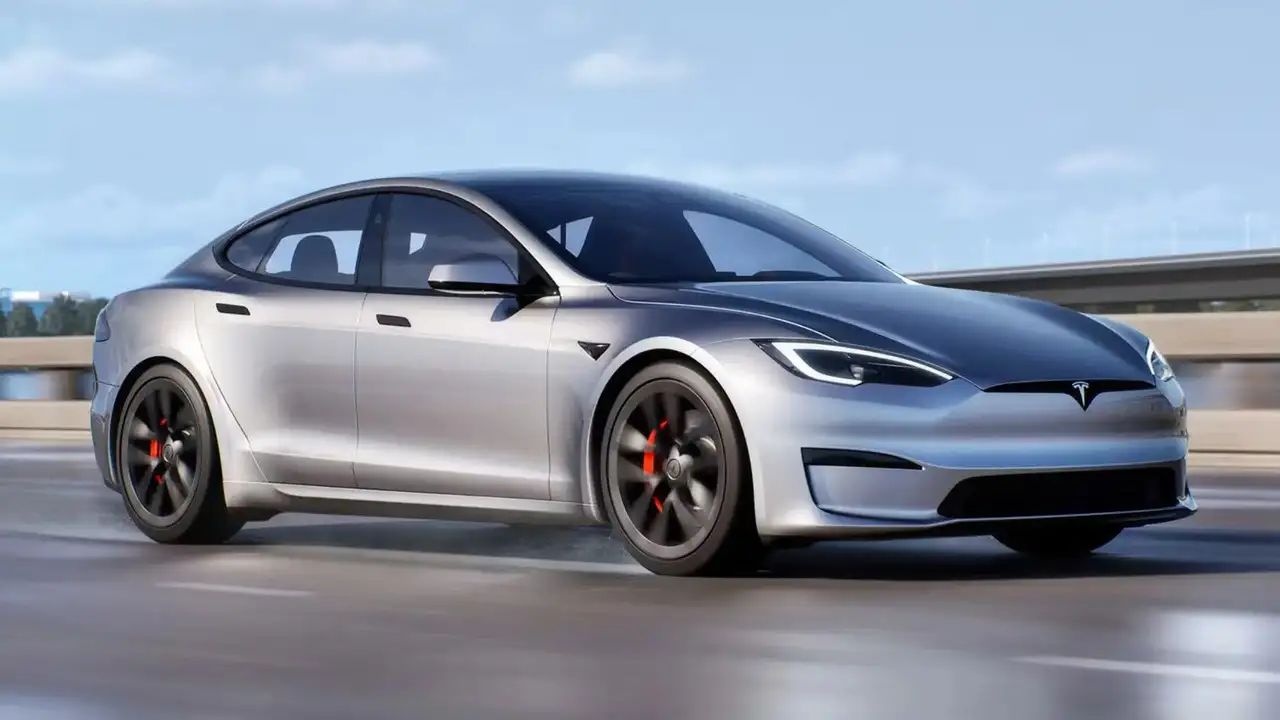
15. **Tesla Model S**
Enter the Tesla Model S, the electric pioneer that revolutionized the automotive world. It’s a car that masterfully combines adrenaline-rushing performance with high-tech luxury, offering features like Autopilot and a massive touchscreen display through which owners can tweak almost anything inside their cabin. For many, it’s not just a car; it’s a vision of the future, delivering instant torque and a driving experience unlike anything else on the road.
Yet, for all its groundbreaking innovation and blistering acceleration, the Model S also follows a similar, rather disheartening pattern when it comes to depreciation. Just like its quick acceleration, its depreciation numbers follow the same rapid pattern. With an original price of $89,990, the Model S faces a 55.5% depreciation rate after five years, plummeting its resale value to around $40,000. That’s a staggering $49,994 difference, making it a difficult pill to swallow.
The context reveals that it ranks a grim 19th among the top 25 vehicles with the highest 5-year depreciation. Several factors contribute to this. The rapid evolution of electric vehicle technology means that older models can quickly be outclassed by newer ones with longer ranges, faster charging, and more advanced features. The high cost of potential battery replacement or sophisticated repairs also makes second-hand buyers wary, severely impacting its long-term value.
For an owner who embraced the Model S as the ultimate high-tech, high-performance luxury statement, watching nearly fifty grand vanish can be a painful experience. The initial excitement of its cutting-edge features and exhilarating speed can be overshadowed by the sobering reality of its rapid value decline. It’s a crucial lesson that even the most revolutionary vehicles aren’t immune to the unforgiving forces of depreciation, often making you wish you could ‘unbuy’ that initial investment.
**Give It Due Thought**
So, there you have it: 15 luxury vehicles that, for all their opulence, power, and prestige, prove to be financial anchors for their original owners. We’ve unboxed the brutal truth of depreciation, a silent thief that can steal tens of thousands of dollars from your investment faster than a hot lap on the Nürburgring. From Italian sedans that whisper elegance but scream expensive repairs, to German SUVs that promise performance but deliver plummeting values, and even an electric pioneer that accelerates your bank account’s decline as quickly as it accelerates on the road.
Car Model Information: 2020 Lexus RX 350 Base
Name: Tesla Model S
ModelYears: 2013–present
Alt: A front-three quarter view of a gray Model S
Caption: #2016–2019: First major update
Designer: Franz von Holzhausen
Weight: cvt
Height: cvt
Width: cvt
Length: cvt
Wheelbase: cvt
ElectricRange: cvt
Battery: kWh,lithium-ion battery
Motor: Unbulleted list
Transmission: Reduction drive
Related: Tesla Model X
Layout: Rear-motor, rear-wheel drive,Dual-motor, all-wheel-drive,Tri-motor, all-wheel-drive layout
BodyStyle: liftback,sedan (automobile)
Class: Full-size car
Assembly: Unbulleted list
Production: June 2012 – present
Manufacturer: Tesla, Inc.
Sp: us
Chassis: Unibody
Categories: 2020s cars, All-wheel-drive vehicles, All Wikipedia articles written in American English, All articles containing potentially dated statements, Articles containing potentially dated statements from 2025
Summary: The Tesla Model S is a battery-electric, four-door full-size car produced by the American automaker Tesla since 2012. The automaker’s second vehicle and longest-produced model, the Model S has been described as one of the most influential electric cars in the industry. Car and Driver named it one of the best cars of the year in 2015 and 2016. Its various accolades include the Motor Trend Car of the Year Award in 2013.
Tesla started developing the Model S around 2007 under the codename WhiteStar, with Henrik Fisker appointed as lead designer for the project. After a dispute with Elon Musk, Tesla’s CEO, Fisker was replaced by Franz von Holzhausen who, by 2008, had designed the production Model S’s exterior. Tesla unveiled a prototype of the vehicle in March 2009 in Hawthorne, California. In 2010, Tesla acquired a facility in Fremont, California, to produce the Model S, which was previously owned by General Motors and Toyota. Series manufacture of the car officially began at the Tesla Fremont Factory in June 2012. Tesla carried out the final assembly for European markets at its facilities in Tilburg, Netherlands, between 2013 and 2021.
Constructed mostly of aluminum, the Model S shares 30 percent of its components with the Model X—a crossover SUV that was introduced in 2015. The Model S has undergone several updates during its production, the most prominent ones occurring in 2016 and 2021. These updates have usually included modifications to the motor, such as changes to power or torque, revised exterior elements, and refreshed interior features. One such change included the 2015 introduction of Tesla Autopilot—a partial vehicle automation advanced driver-assistance system. The 2021 update led to the introduction of the high-performance, three-motor Plaid—Tesla’s most powerful model.
In 2015, the Model S was the world’s best-selling plug-in electric vehicle. In 2012, it was included on Time’s list of the Best Inventions of the Year, and the magazine later included it on its list of the 10 Best Gadgets of the 2010s in 2019. In 2014, The Daily Telegraph described the Model S as a “car that changed the world”. Road & Track argued that, with the introduction of the Plaid and features such as the yoke steering wheel, Tesla managed to turn the Model S into “perhaps one of the worst [cars in the world]”.
Get more information about: Tesla Model S
Buying a high-performing used car >>>
Brand: Tesla Model: Model S
Price: $30,981 Mileage: 81,179 mi.
Read more about: Hold Up! 12 Electric Vehicles That Have Owners Wishing for a Do-Over
The takeaway is clear: if you’re one of those fortunate souls who can afford to buy a new luxury car and plans to keep it for a considerable number of years, perhaps depreciation isn’t your primary concern. You might be able to ride out the worst of the value drop and simply enjoy the car for what it is. But if you’re someone who frequently trades in or sells luxury cars every couple of years, hoping to always have the latest and greatest, then prepare for a substantial financial loss. The sorrow in every depreciation drop is a very real, very painful reality. Sometimes, the dream machine you thought you bought turns out to be a financial black hole. Choose wisely, because your wallet will thank you.

